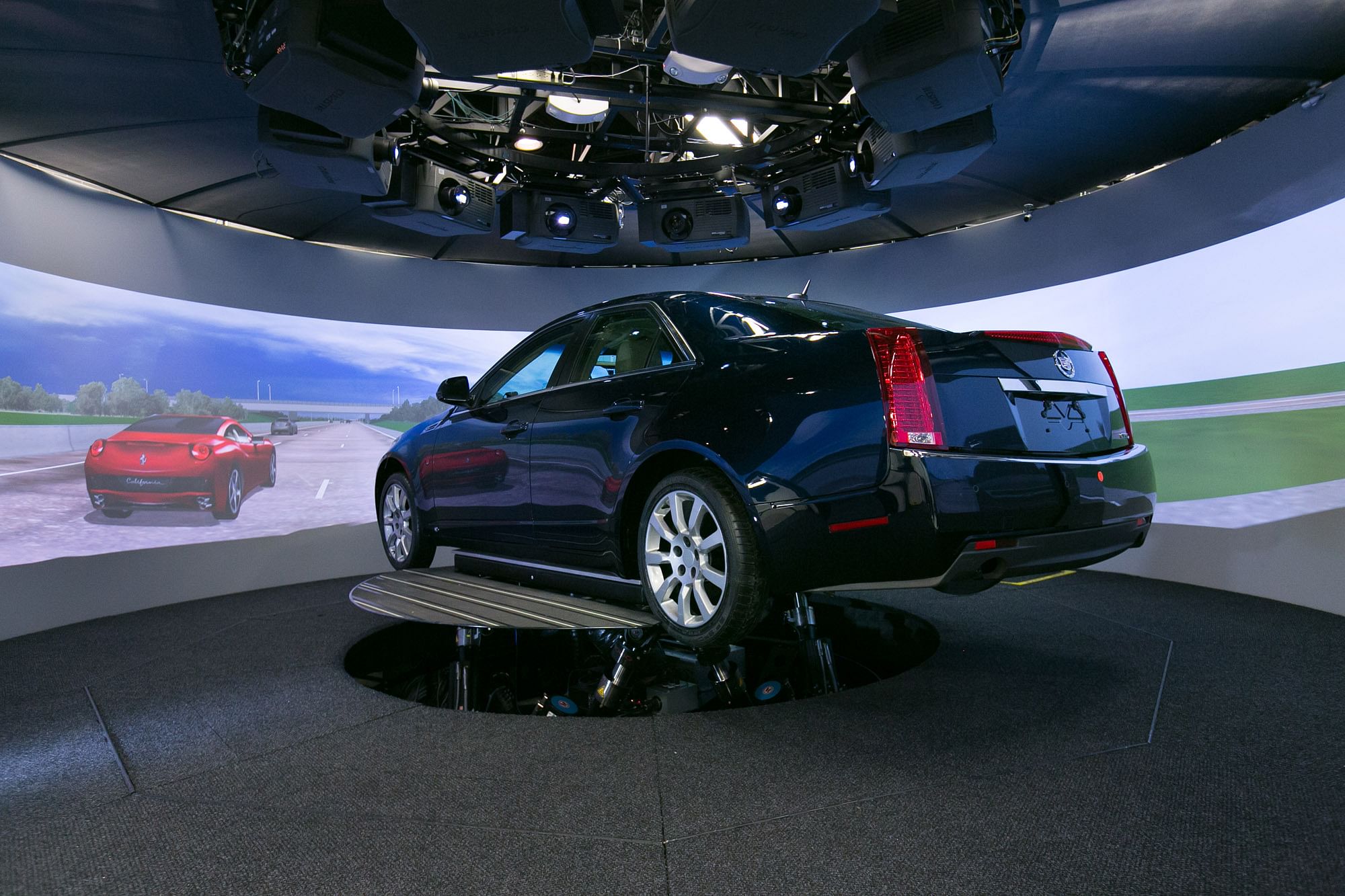GM’s driving simulator puts ‘Super Cruise’ to the test
Lightning-fast refreshing of visuals inside General Motors’ Research Driving Simulator are helping advanced technology developers study how drivers interact with Super Cruise, the semi-automated driving system that could be in Cadillac models later this decade.
Lightning-fast refreshing of visuals inside General Motors’ Research Driving Simulator are helping advanced technology developers study how drivers interact with Super Cruise, the semi-automated driving system that could be in Cadillac models later this decade.
The upgrades to the simulator provide realistic road feel and responsiveness to driver actions, reducing the feeling of disorientation associated with driving simulators, particularly during low-speed maneuvers.

A 360-degree high-definition projection screen integrated with a 2-terabyte-per-second image generator allows visuals to dynamically respond to steering and pedal force inputs within 70 milliseconds.
These enhancements let Super Cruise developers measure driver control interactions, eye-glance behaviour, and evaluate driver approaches before full system vehicles are available.
“Simulator testing helps our vehicle teams understand the consequences of design decisions quickly and early in the development cycle when it is cost effective to do so,” said John Capp, director of GM Electrical, Controls and Active Safety Research. “Ultimately, the work done here enables the rapid development of sophisticated systems like Super Cruise and leads to improved driving experiences for our customers.”
The system can load vehicle concept designs and integrate new prototype controls in the test vehicle with minimum programming or preparation. Suppliers also can load their models to test some vehicle control subsystems before building them.
Advanced driver assistance and safety features will play an increasingly important role in keeping drivers alert during semi-automated driving, Capp said. The system is designed to ease the driver’s workload on freeways only, in bumper-to-bumper traffic and on long road trips, but driver attention is still required.
Traffic crash data seems to suggest a need for automated driving systems. According to the National Highway Safety Transportation Administration, human error causes more than 90 percent of all crashes, a figure that could be lowered with widespread use of automated driving systems.
RELATED ARTICLES
Volvo Cars signs recycled steel supply pact with SSAB
The recycled steel will be used in selected components of the forthcoming, fully electric EX60 SUV, as well as other car...
Schaeffler and NVIDIA ink technology collaboration to advance digital manufacturing
Using NVIDIA Omniverse, Schaeffler is expanding its production elements, which will be integrated and simulated as digit...
BMW Group to industrialise Virtual Factory, slash production planning costs
What once required several weeks of real-world modifications and testing can now be precisely simulated in the BMW Group...





 22 Apr 2014
22 Apr 2014
 4446 Views
4446 Views





 Autocar Professional Bureau
Autocar Professional Bureau




